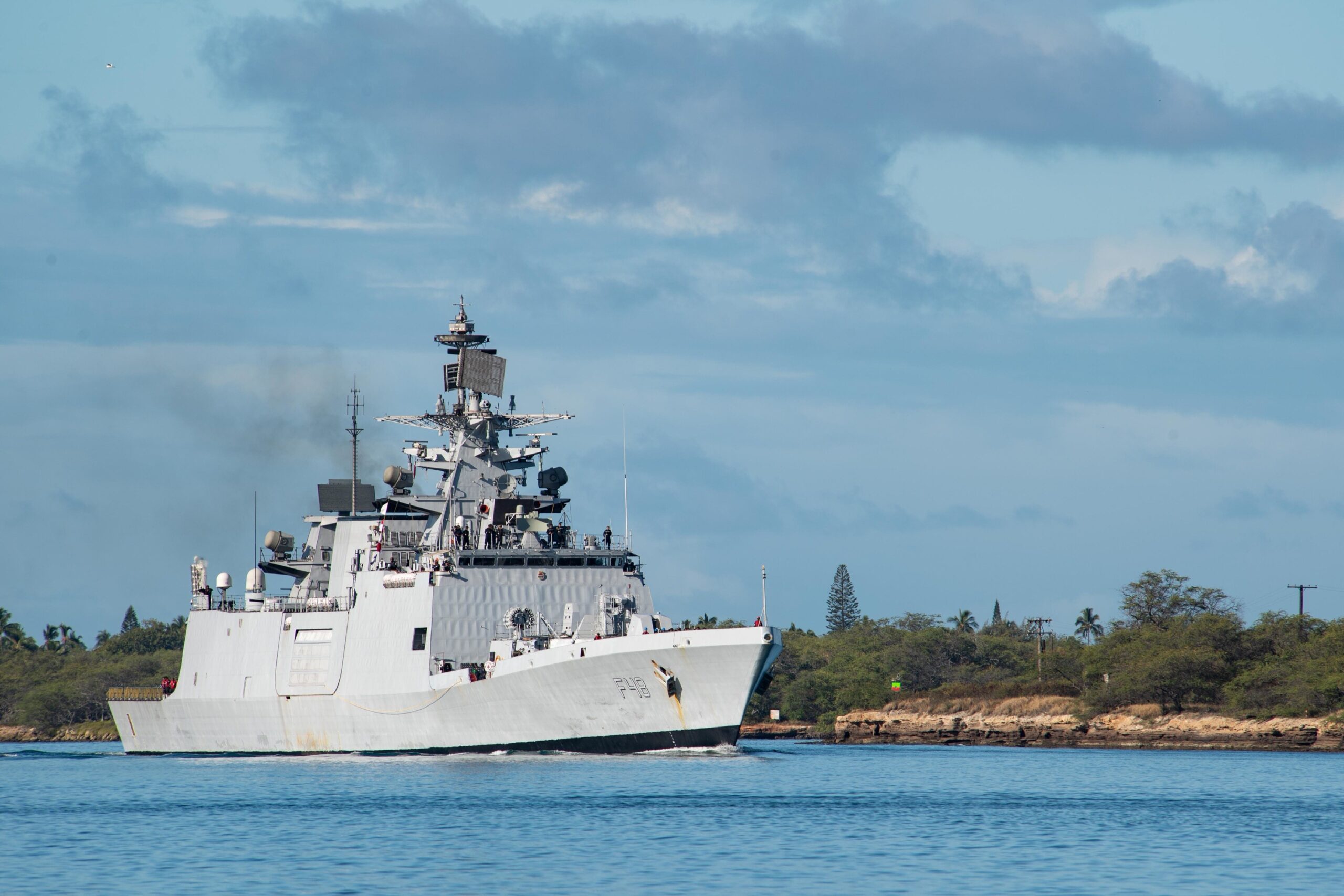Editorial Note: This article was originally published at Bloomberg before this weekend’s fragile ceasefire was announced.
by Admiral James Stavridis (Bloomberg Opinion) Following the killings of two dozen tourists picnicking in a meadow in the Kashmir region two weeks ago, India and Pakistan are on high military alert and trading accusations and sanctions. The Indians believe the Pakistanis sponsored the killings through longtime support of the terrorist group Lashkar-e-Taiba. (An offshoot, the Resistance Front, claimed responsibility.) On Wednesday morning, India began a “focused, measured and non-escalatory” operation against nine sites of “terrorist infrastructure” in Pakistan, according to its ministry of defense.
While India administers Kashmir, both countries claim it, and significant numbers of troops — including highly trained special forces — are nose-to-nose on the disputed boundary. Both sides are breaking agreements for trading goods and conducting shipping at their Indian Ocean ports, and a crucial water treaty has been suspended. The US and China are attempting to calm the situation, to no avail.
Leaders of both nuclear-armed powers are fanning the flames. Most ominously, the chief of the Pakistani army, General Syed Asim Munir, said any attack by India will be “met with a swift, resolute and notch-up response.”
Where is this spiral of threats headed? Is there a real danger of wider military conflict?
India has many options for further retaliation short of full-on combat. It could choose a cyberattack against critical Pakistani infrastructure; launch special forces against what it regards as terrorist organizations operating in Pakistan’s territory, as it did in 2016; undertake precision air strikes, as it did in 2019; or initiate artillery barrages along the Kashmiri border. (The use of nuclear weapons by either side is not on the table, as those arsenals remain secure and mutually deterring.)
But a less obvious thing I worry about — as a naval officer who sailed many long voyages on the Indian Ocean — is the possibility of the conflict spilling over to the sea. The world’s third-largest ocean affords plenty of options for maritime adventurism. Leaders of both nations may see the use of naval forces as less potentially escalatory: there would be no civilian casualties, combat would occur offshore away from media coverage, and the maneuver space for positioning operations is boundless.
But trust me: Military confrontation at sea can escalate all too easily. A strategy of naval brinkmanship could bring the nations closer to broader war.
I have visited the Pakistani navy at its principal base in Karachi several times, and have embarked Indian warships in the Arabian Gulf. Both forces are powerful, professional and proud.
The Indian navy is very capable, with two aircraft carriers, dozens of surface ships, 16 attack submarines and more than 70,000 sailors. It also operates long-range P-8 Poseidon surveillance aircraft along with numerous fighters, attack planes, and helicopters with over-water capability.
Pakistan’s navy is smaller, with only around 30,000 sailors, and has more of a coastal focus, appropriate given the nation’s relatively short coastline. But supported by China and Turkey, it has dozens of warships and a growing submarine force of eight active boats. The Pakistanis fly an older but still capable US maritime patrol aircraft, the P-3 Orion. Both sides have well trained SEAL-like maritime special forces.
Complicating matters, a powerful Turkish warship, the Buyukada, arrived in Karachi over the weekend. There have also been reports that half a dozen Turkish C-130 transport aircraft landed in Pakistan carrying military supplies, although the Turkish government denies this. Either way, Turkish President Recep Tayyip Erdogan is clearly signaling his support for Pakistan. We can also expect China to eventually line up with Islamabad.
Nonetheless, the Indian navy will likely patrol and fly aggressively off Karachi — the largest city in Pakistan, with a population of over 20 million. There will probably be Indian submarines under nearby waters as well, collecting intelligence.
And while India is unlikely to launch an unprovoked, direct attack on the Pakistani navy, either in port or in open waters, an Indian show of force itself would be very provocative and could lead to an aggressive sortie by Pakistani ships. In such a scenario, I worry, both sides could see it as a sort of maritime game of chicken, viewing it as somehow less risky than land-based military options.
Don’t be so sure. I’m reminded of the classic — and realistic — Cold War novel The Bedford Incident, in which the US and Soviet navies tangle in the waters off Greenland, with escalatory and disastrous results.
A similar situation, albeit on a smaller scale, could play out in the northern reaches of the Indian Ocean — with the US Navy’s Indo-Pacific Command caught in the middle. India and Pakistan would be wise to avoid inflaming tensions not only in Kashmir and across the subcontinent, but also on the wide expanse of the Indian Ocean.
Admiral James Stavridis is a Bloomberg Opinion columnist. A retired U.S. Navy admiral, former supreme allied commander of NATO, and dean emeritus of the Fletcher School of Law and Diplomacy at Tufts University, he is vice chairman of global affairs at the Carlyle Group. He is the author most recently of “To Risk It All: Nine Conflicts and the Crucible of Decision.”
@stavridisj on X

 Join The Club
Join The Club











